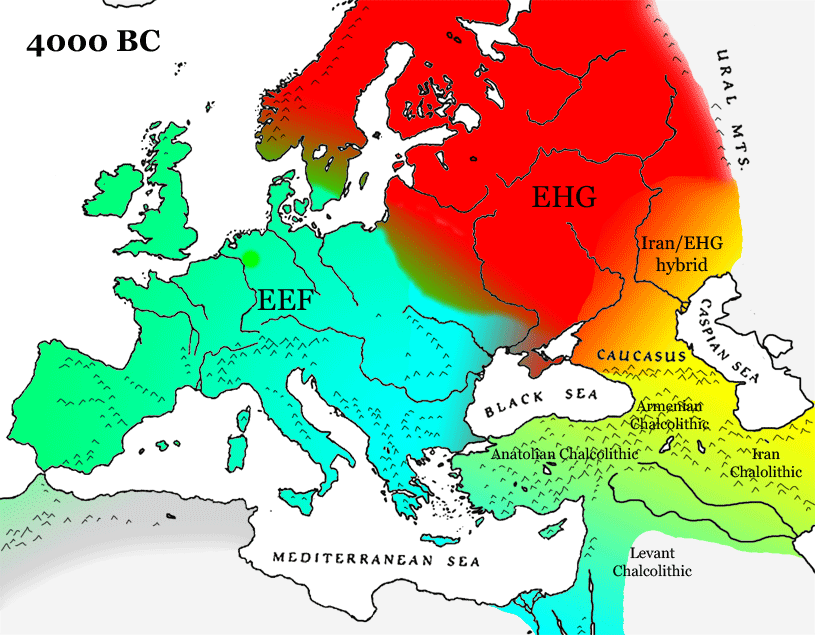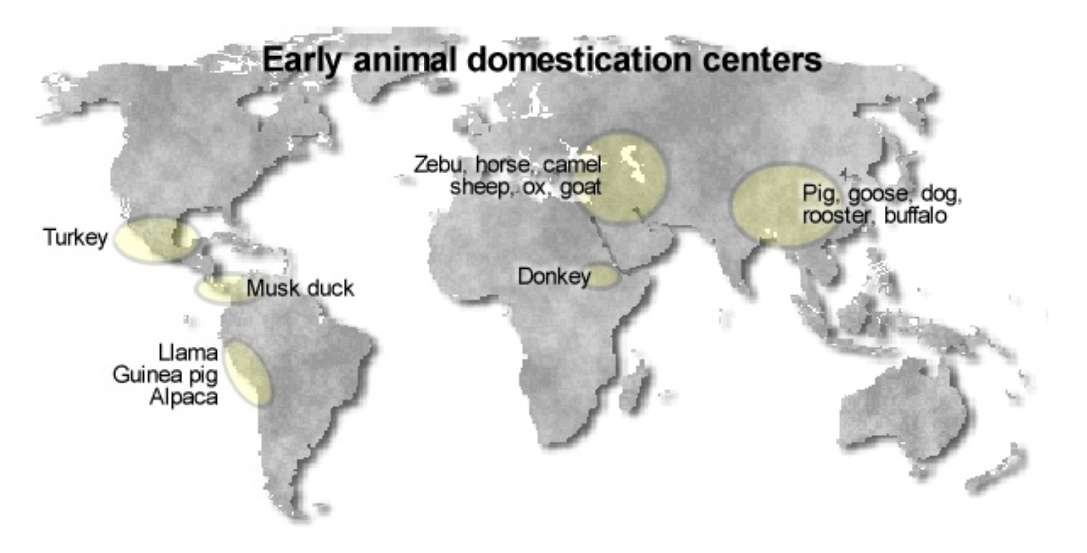“LBA/IA” is simply one instance when these genotypes were transferred to the West. The same phenomena was repeated at later times with Scythian/Turkics and the like.
No, they weren't the same phenomena. They were completely different populations (genetically and culturally) under totally different socioeconomic circumstances. These ideas about extremely broad, sweeping "historical trends" over dozens of thousands of years always miss the details and end up being very deceiving. In North Eurasia, Upper Paleolithic ANE westward migration was not the same as EBA eastward migration from Eastern Europe, which was not the same as westward Scythian migration in the early IA, which was not the same as westward Turkic/Hunnic migration in the late IA, etc. Everything differed: the starting point, the extent of the expansion, the genetic makeup of the expanding population, and so on.
We know that the plethora of R lines do not originate in the West or Russia for that matter and there are multiple lines of evidence which lead to this conclusion. The west was sink for these lines however and thus can deceptively appear as a source.
No, we don't know that. The earliest R* is in Russia (Siberia), the earliest R1a and R1b lineages are all in North Asia and Europe (North Eurasia). The brother haplogroup of R, Q, is also mostly North Eurasian in both ancient and modern DNA distribution. Humankind's expansion from the south
of course happened, but again pay attention at the chronology. We are talking about lineages that have a TMRCA in the last 6,000 years, we aren't talking about demographic events 40,000 to 50,000 years ago, when North Eurasia was peopled in different waves.
There is extra EEF in the Fatyanovo samples, EEF is essentially Levantine.
Hmm, no, it isn't "essentially Levantine". It's Anatolian, without the significant (~25-30%) North African ancestry found in Natufian (Epipaleolithic Levantines). And it's also ~5-25% WHG-admixed.
Even if the migration took a circuitous route over many centuries, it still originated in the MidEast. The CHG (subsumed under “steppe”) and Levantine in Fatyanovo likely traveled together. At any rate, the steppe is an highly admixed region where almost all components have a prior history in the South.
No, they likely didn't at all. EEF and CHG blended into steppe admixture spread northward through totally different routes and in different timelines. EEF and CHG were taking completely independent and isolated expansions in Europe until the Copper Age. Where have you been in the last years that you missed all the ancient DNA studies?
Also, the "prior history" in the south that you're speaking about happened hundreds or even thousands of years before the TMRCA of R1a-M17, so it has nothing to do with what we were originally discussing.
The Mideast including Iran are large ecosystems that can hold and produce many lines while Europe lies at the recipient end of this Souther diversity starting with the yDNA-G in EEF, and yDNA-I which orignated from IJ in Iran. There are R lines in the South like R2. Mal’ta has R* and MtDNA-U*. and we know that U had to originate in the South among the much larger southern diversity of N/R/U. This gives an indication of where the yDNA-R lines originated - not to far from where all other european sink diversity originated.
R2 probably came to South Asia with the early Iranian agriculturists, who were ~50% ANE, that is, derived from a NORTH > SOUTH migration in the Upper Paleolithic. That fits with a split between a southern lineage developing into R2 and a northern lineage remaining and developing into R1. Not everything went from the south to the north, history was much more complex.
Besides, ultimately you're talking about events that took place before 30,000 years ago, which have nothing to do with the much latter expansion of R1a-M17 in the Early Bronze Age.






